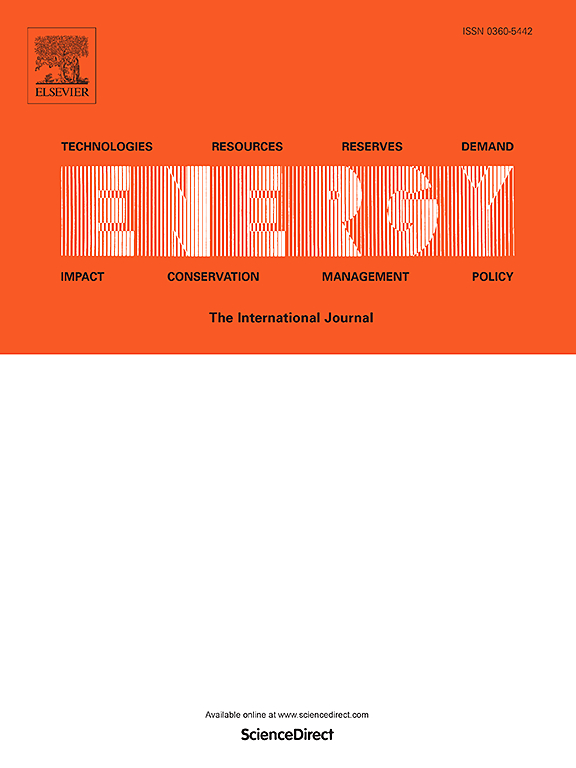Hierarchical power output prediction for floating photovoltaic systems
IF 9
1区 工程技术
Q1 ENERGY & FUELS
引用次数: 0
Abstract
Accurate forecasting of power output in Floating Photovoltaic (FPV) systems is essential for optimizing renewable energy generation and improving energy management strategies. This study introduces a novel hierarchical prediction framework that enhances FPV power forecasting by systematically modeling energy output at three levels: (1) Maximum Power Point Tracking (MPPT) level, (2) phase-wise level, and (3) total system level. This structured approach captures the interdependencies between different operational levels, improving both prediction accuracy and interpretability. A high-resolution dataset, spanning one year with 5-min interval measurements, was collected from an operational FPV system at Universiti Malaysia Pahang Al-Sultan Abdullah (UMPSA) and used for model training and validation. The dataset comprises meteorological parameters (solar irradiation, ambient temperature) and electrical characteristics (MPPT voltage, current, and phase-wise power output). Five machine learning models—Feedforward Neural Network (FFNN), Random Forest (RF), Extreme Learning Machine (ELM), Support Vector Machine (SVM), and eXtreme Gradient Boosting (XGBoost)—were evaluated within the hierarchical framework. Results indicate that FFNN outperforms all other models, achieving an RMSE of 0.0125, MAE of 0.0024, and an R2 of 1 at the system level. The hierarchical structure improves predictive robustness, reduces error propagation across levels, and enhances real-time monitoring by facilitating localized performance analysis. This framework offers a scalable and adaptable solution for FPV forecasting, contributing to enhanced grid stability and more effective energy management. The findings demonstrate the practical benefits of hierarchical modeling in renewable energy prediction, providing a foundation for future research into adaptive forecasting models for dynamic environmental conditions.

求助全文
约1分钟内获得全文
求助全文
来源期刊

Energy
工程技术-能源与燃料
CiteScore
15.30
自引率
14.40%
发文量
0
审稿时长
14.2 weeks
期刊介绍:
Energy is a multidisciplinary, international journal that publishes research and analysis in the field of energy engineering. Our aim is to become a leading peer-reviewed platform and a trusted source of information for energy-related topics.
The journal covers a range of areas including mechanical engineering, thermal sciences, and energy analysis. We are particularly interested in research on energy modelling, prediction, integrated energy systems, planning, and management.
Additionally, we welcome papers on energy conservation, efficiency, biomass and bioenergy, renewable energy, electricity supply and demand, energy storage, buildings, and economic and policy issues. These topics should align with our broader multidisciplinary focus.
 求助内容:
求助内容: 应助结果提醒方式:
应助结果提醒方式:


